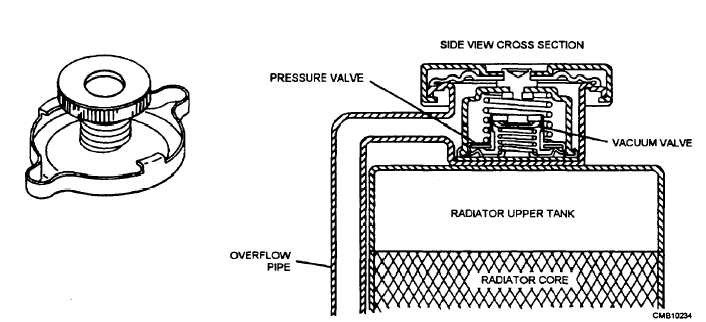
Figure 6-6. - Radiator pressure cap.
pressure, the boiling point of water increases. Normally water boils at 212F. However, for every pound of pressure increase, the boiling point goes up 3F.
Typical radiator cap pressure is 12 to 16 psi. This raises the boiling point of the engine coolant to about 250F to 260F. Many surfaces inside the water jackets can be above 212F.
If the engine overheats and the pressure exceeds the cap rating, the pressure valve opens. Excess pressure forces coolant out of the overflow tube and into the reservoir or onto the ground. This prevents high pressure from rupturing the radiator, gaskets, seals, or hoses.
The radiator cap vacuum valve opens to allow reverse flow back into the radiator when the coolant temperature drops after engine operation. It is a smaller valve located in the center, bottom of the cap.
The cooling and contraction of the coolant and air in the system could decrease coolant volume and pressure. Outside atmospheric pressure could then crush inward on the hoses and radiator. Without a cap vacuum or vent valve, the radiator hose and radiator could collapse.
CAUTION
Always remove the radiator cap slowly and carefully. Removing the radiator cap from a hot pressurized system can cause serious burns from escaping steam and coolant.
Water Pump
The water pump is an impeller or centrifugal pump that forces coolant through the engine block, cylinder head, intake manifold, hoses, and radiator (fig. 6-7). It is driven by a fan belt running off the crankshaft pulley. The major parts of a typical water pump include the following:

Figure 6-7. - Water pump.
Continue Reading